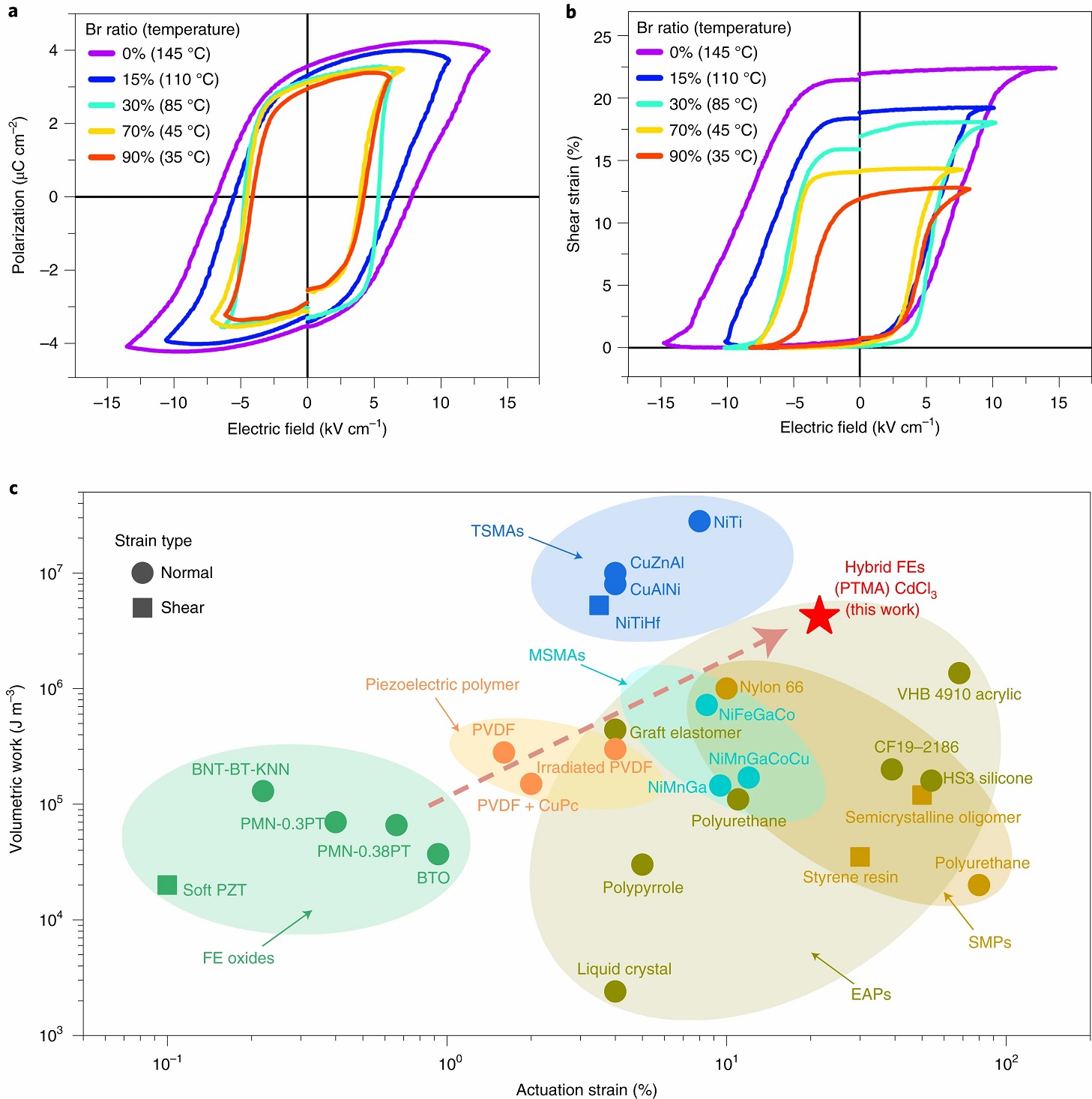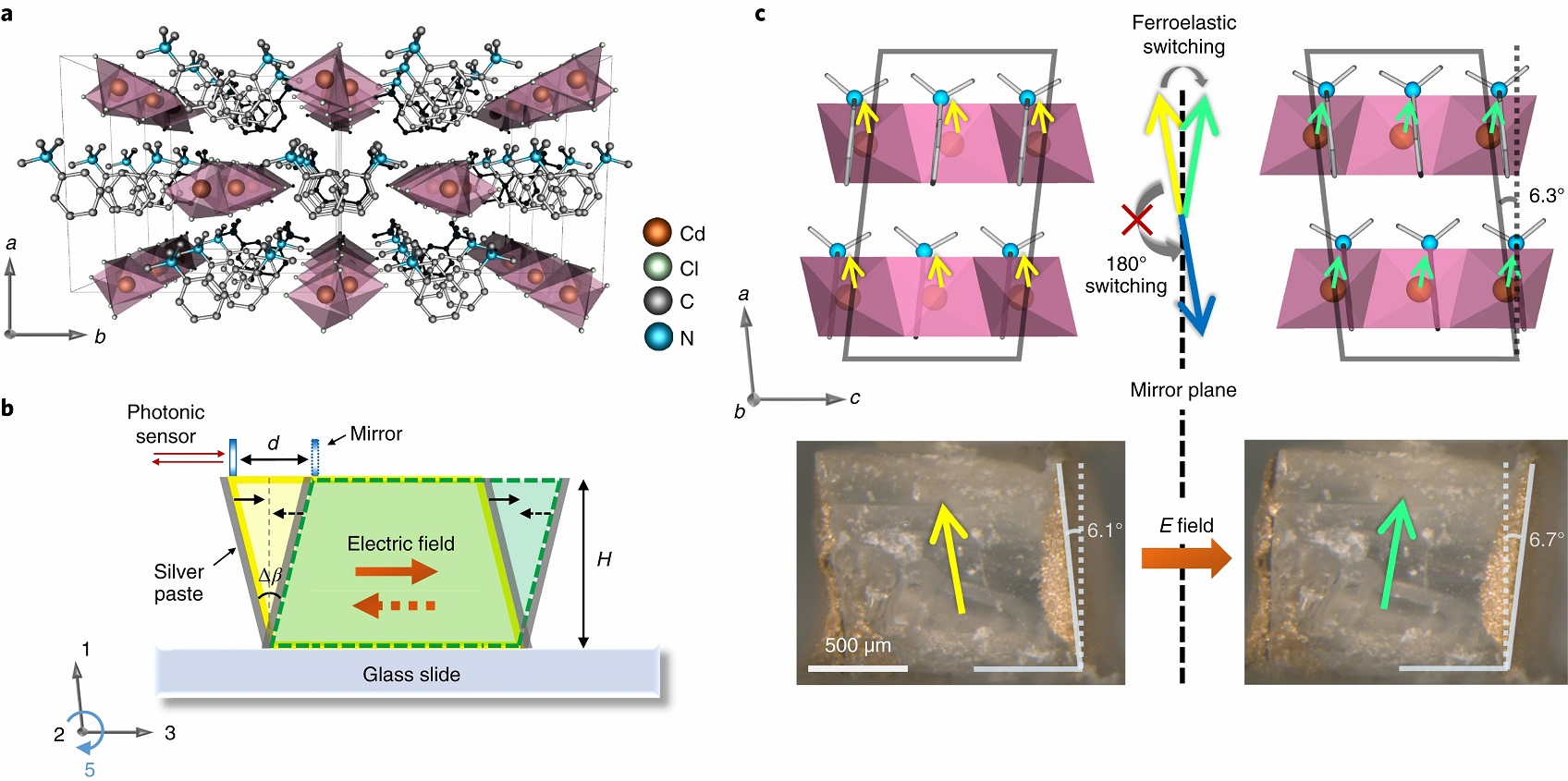Researchers unveil giant spin-splitting in room-temperature metallic antiferromagnet CrSb
2024-11-20Researchers achieve series of progress in field of thermoelectric materials and device physics
2024-09-14Researchers explore new horizons in spin space groups
2024-09-02Researchers make breakthrough in magnetic kagome superconductivity
2024-08-26Researchers reveal evolution of spin-orbit splitting near silicon isotope chains
2024-05-31Recently, Professor Junling Wang from the Department of Physics at Southern University of Science and Technology (SUSTech), and Professor Hongjin Fan from Nanyang Technological University, have made important progress in the field of piezoelectric materials. They have synthesized new organic-inorganic hybrid ferroelectric materials, achieving a shear strain of 21.5%, which is two orders of magnitude greater than that in conventional ferroelectric polymers and oxides. The work was published in Nature Materials with the title of “Ferroelastic-switching-driven large shear strain and piezoelectricity in a hybrid ferroelectric”.
Piezoelectric materials are widely used to make transducers, sensors, filters, and other devices that play an important role in various fields, and people have made great efforts to improve their strain response. It is well known that ferroelastic switching can produce large reversible strains, as shown in shape memory alloys and specially designed ferroelectric materials. However, achieving ferroelastic switching in traditional ferroelectric materials at bulk level is very challenging due to the high energy barrier associated with their mechanical stiffness. It is thus possible that materials with large remanent polarization and low stiffness will produce a large piezoelectric response. However, in reality, it is often found that the polarization of flexible organic materials is low, while that of rigid inorganic materials is high. This phenomenon has steered researchers’ attention to organic-inorganic hybrid piezoelectric materials.

Figure 1. Ferroelectric and ferroelastic properties of (PTMA) CdBr3xCl3(1– x) and comparisons with other materials.
The research team prepared (PTMA)CdBr3xCl3(1– x) ferroelectric materials by combining flexible organic molecules with a rigid inorganic material framework, and systematically adjusted their electromechanical properties by bromine (Br) doping. Due to the limitation of material structure, the 180 ° ferroelectric polarization reversal in (PTMA)CdBr3xCl3(1– x) is very difficult, which makes the controllable ferroelastic reversal with super large shear strain possible. At the same time, the study shows that the Br substitution can effectively soften the chemical bonds, reduce the polarization reversal barrier, and then enhance the shear piezoelectric coefficient of the material. The minimum energy path mapping between the two ferroelastic states shows that there is a shallow double-well landscape in the Br rich samples.

Figure 2. Crystal structures and photos of (PTMA)CdCl3 in two different ferroelastic states.
The work of Professor Junling Wang and his team has opened a new direction for the research of piezoelectric materials. The structural confinement effect makes it possible to deterministically control ferroelastic switching and obtain a super large strain. The principle of bond softening can also guide us to design more organic-inorganic hybrid ferroelectric materials with a high piezoelectric response.
Junling Wang is the co-corresponding author of the paper, while SUSTech is the co-corresponding author affiliation. The project is supported by the National Natural Science Foundation of China (NSFC), Singapore Ministry of Education, and SUSTech.
Paper link:
https://www.nature.com/articles/s41563-020-00875-3#author-information
Chinese news Link:
https://newshub.sustech.edu.cn/zh/html/202102/39647.html
English news Link:
https://newshub.sustech.edu.cn/?p=30120